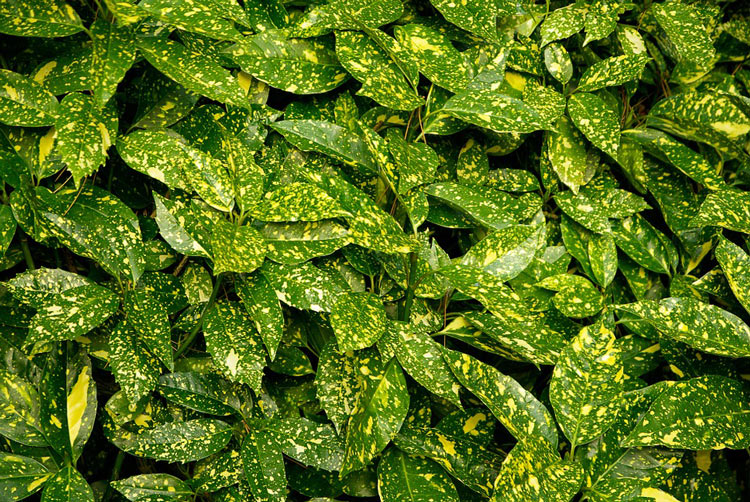Growers Guide for Aucuba Japonica
Evergreen shrubs, 5-6 ft. high, with large, glossy, laurel-like green or variegated leaves and clusters of red fruits, each containing a single seed. The flowers are small and not showy, and male and female flowers are borne on different plants. They grow wild in Japan, China, and the Himalayas, and belong to the Dogwood family, Cornaceae. The word Aucuba is derived from the Japanese name of the shrub, aokiba. Aucubas will live outdoors in very sheltered locations near New York City but are generally hardy only where milder winters are the rule.
As Pot Plants
Aucubas are very satisfactory for cool rooms and sun porches and are good for growing in large pots or tubs as terrace plants. They thrive in any ordinary soil. From spring through fall they need plenty of water but should be kept drier in winter.
Will Thrive Beneath Trees
They thrive in any good garden soil, either in full sun or partial shade, and withstand a good deal of dryness at the roots; they are among the best evergreens for planting beneath the shade of trees. They will, in fact, thrive where many other plants and shrubs will perish, even beneath the shade and drip of large trees, provided the soil is not quite impoverished. Propagation can be effected by means of cuttings.
When to Take Cuttings
If terminal shoots, with two or three side branches, are inserted in a propagating case in a greenhouse—temperature 60 degrees during spring or summer—they form roots in a few weeks and may soon be planted out of doors. Similar cuttings will also form roots in August in a cold frame, or even out of doors.
Sowing Seeds and Layering
Seeds, cleansed of the outer fleshy pulp, may be sown as soon as ripe in autumn, in pots of sandy soil in a greenhouse—temperature 50-55 degrees. Fresh plants are sometimes raised from branches layered in spring, and large shrubs can be divided in September. As cuttings are in every way satisfactory, it is rarely necessary to resort to any other means of raising stock.
Very little pruning is required, for young plants grow naturally into shapely bushes; overgrown plants should be cut back in March or April. Planting may be done in spring or fall.
Green and Variegated Leaves
Aucuba japonica has green leaves, but the varieties with variegated leaves are chiefly grown. A male plant should be planted among every six female plants to ensure a good crop of berries. Two of the best varieties with variegated green and pale yellow leaves are variegata, the Gold-Dust Tree, and picturata (also called latimaculata and aureomaculata).






